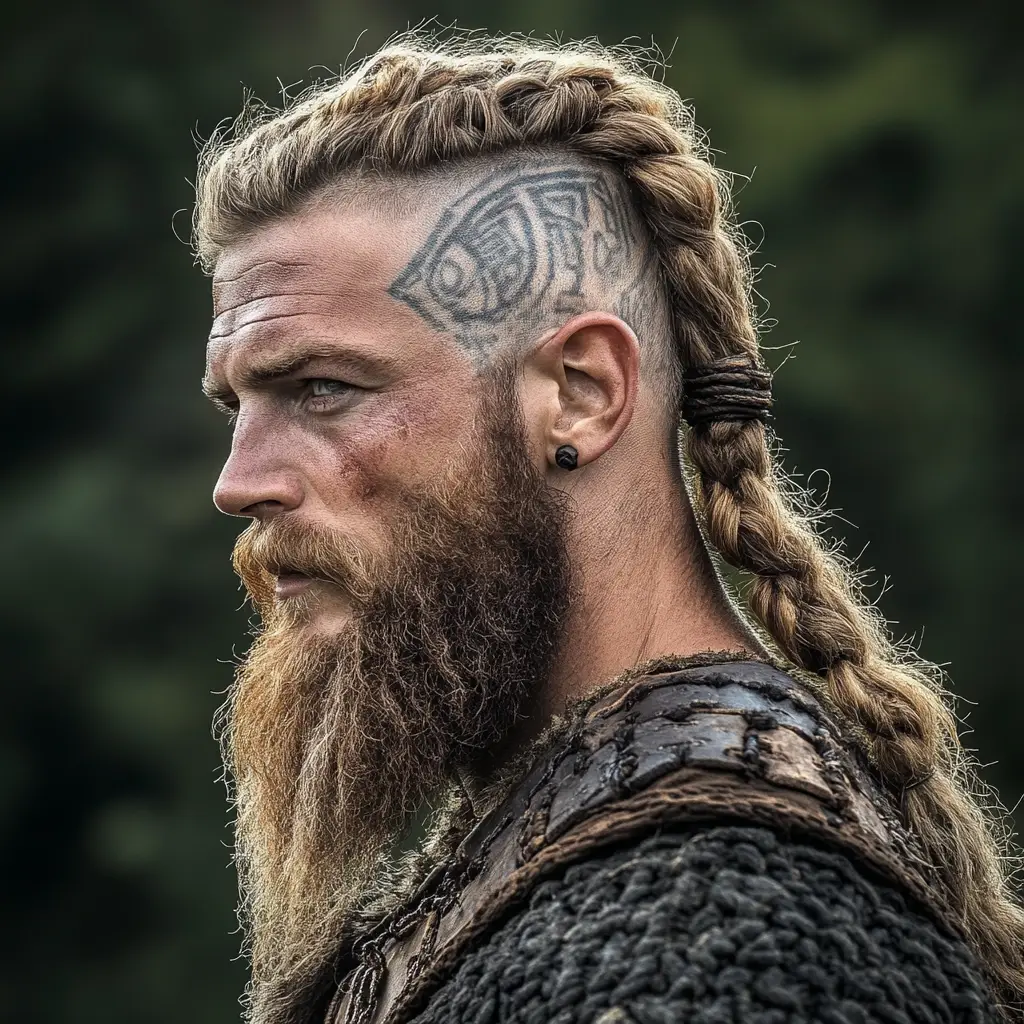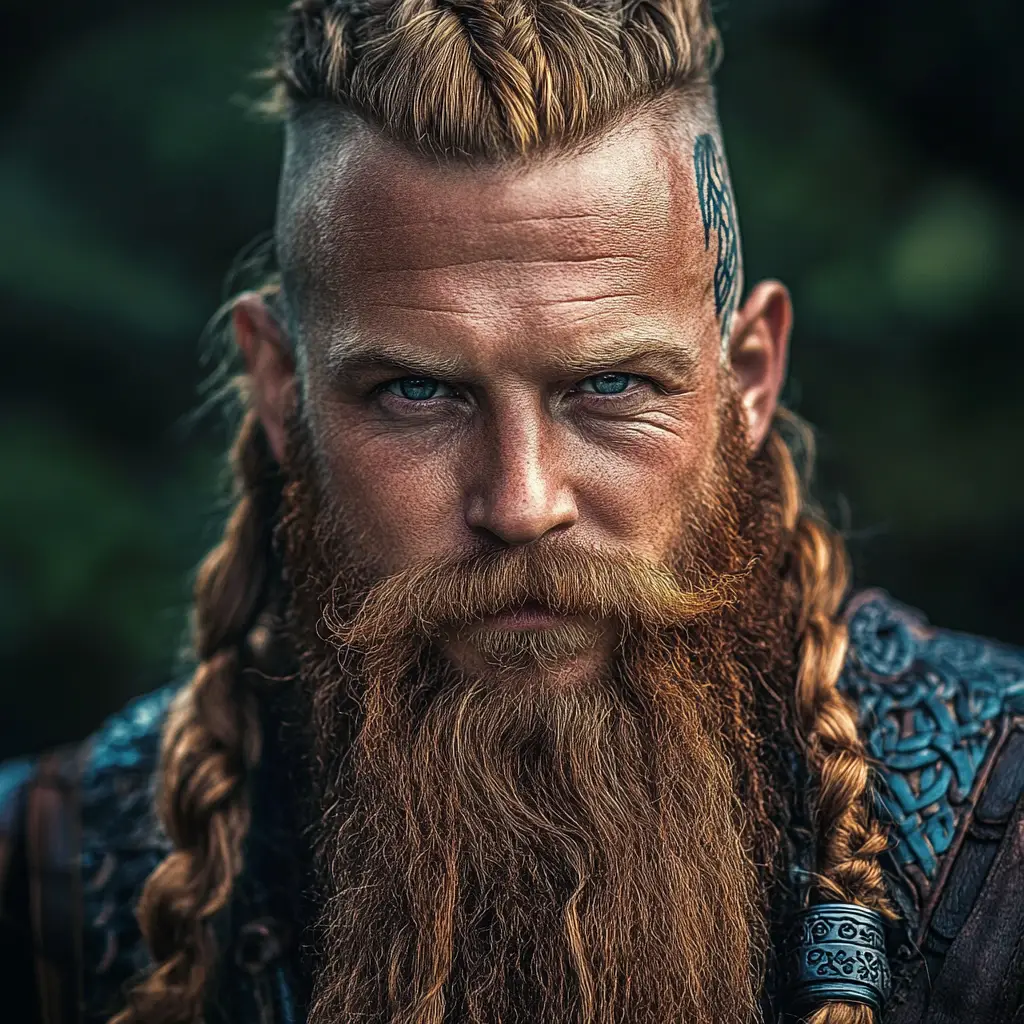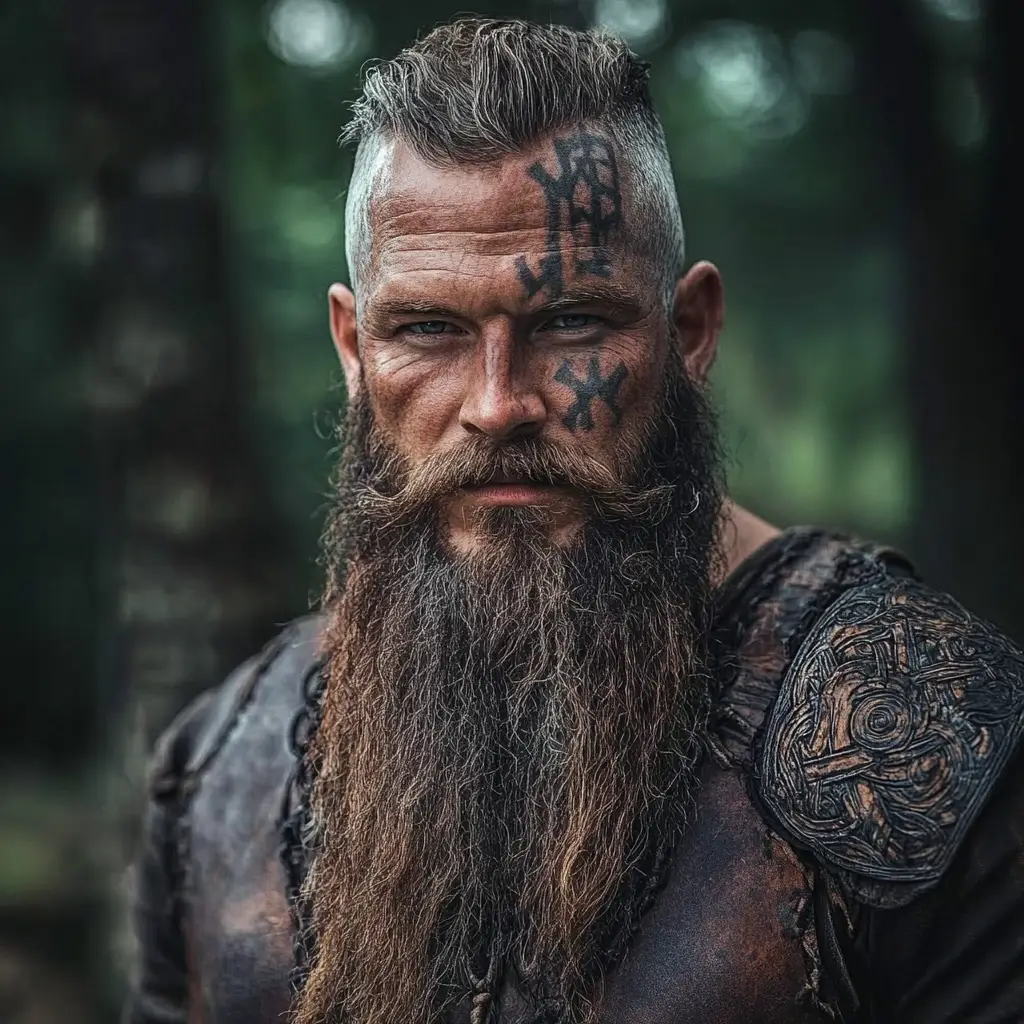Viking hairstyles were as varied and functional as the Norse culture itself, blending practical needs with a sense of style and social identity. Both men and women in Viking society paid attention to their grooming, often styling their hair to reflect their status, role, or personality. Viking hairstyles also appear to have drawn from cultural symbols and practical considerations, adapting to the needs of warriors, traders, and farmers alike.
Popular Viking Hairstyles
Long Hair for Men and Women:
Viking men often wore long hair, reflecting strength and vitality. Warriors sometimes let their hair grow freely, while others tied it back or braided it for practicality in battle. For women, long hair was common, symbolizing femininity, health, and beauty.
Braids and Plaits:
Both men and women used braids, particularly for practical reasons. Braids kept hair tidy during work or combat, and some warriors wore intricate plaits to give a fierce, formidable appearance.
Viking women, especially of higher status, wore their hair in elaborate braids or buns, sometimes decorated with metal hair rings or beads.
Shaved and Undercut Styles:
Archaeological evidence and written sources, including the writings of Arab travellers, suggest some Viking men shaved parts of their heads, especially the sides, leaving hair long on top. This undercut look was popular among warriors for its intimidating, striking appearance.
Beards and Moustaches:
Viking men often wore full beards, which they carefully groomed and sometimes braided or adorned with beard rings or beads. The beard was a symbol of masculinity, and a well-kept beard indicated status and pride.
Hair Rings and Beads:
Metal hair rings and beads were common accessories in Viking hairstyles, particularly for those of higher social standing. These small, decorative items were often made of bronze, silver, or gold and added to braids or buns as a sign of wealth or status.
Ponytails and Tied Hair:
For both men and women, tying hair back in ponytails or buns was a common, practical style, particularly among those engaged in labour or combat.
Hair Hygiene and Maintenance
The Vikings valued cleanliness and were known to bathe regularly and groom themselves with tools such as combs, razors, and tweezers, many of which were finely crafted from bone or metal. Combs are one of the most common artifacts found in Viking graves, highlighting the cultural importance of personal grooming.
We attend a Viking festival here in the UK every yearand see many a good Viking hairstyles and beards.!





